The methodology used in any index may always contain subjective aspects due to the nature of the subject matter, which implies standardizing reality data in a comparative indicator that is easy to read for very different scenarios. To preserve practicality, it has been decided to standardize the scores in each evaluated category and then introduce the subjectivity quota in the weighting assigned to each within the final score.
The methodology evaluates 11 categories in total.











Two of them are considered the most relevant because they are considered the starting point or basis for the rest of the categories. These are Prohibition and (regulatory) Framework. The remaining categories are fundamental in their contribution to the transition from combustible tobacco to Non-Combustible Nicotine Products (NCNPs). Each is described below:
Categories
As can be seen, evaluating the last nine categories depends on the absence of prohibition in the first two categories. In cases where the product is prohibited, the latter is not assessed and takes the minimum value of zero. The values of the options within the categories have been standardized. These can take a maximum value of 100 and a minimum value of 0, with intermediate values in specific categories. Then, the categories are weighted according to their importance in replacing combustion products to obtain the final score per product.
Thus, the following methodology is configured, where all the categories, the options within them, the scores for each option, and the weighting that each category has in the final score per product are shown:
| Category | Option | Points | Weighter | |
|---|---|---|---|---|
| Legal | Vaping | The product is legal, and the nicotine limit (if existent) is equal to or above 20mg/ml | 100 | 30,0% |
| The product is legal but the nicotine limit is below 20mg/ml | 50 | |||
| The product is not legal | 0 | |||
| THP | The product is legal | 100 | ||
| The product is not legal | 0 | |||
| Snus | The product is legal | 100 | ||
| The product is not legal | 0 | |||
| NP | The product is legal and the nicotine limit (if existent) is equal to or above 16.6mg/pouch | 100 | ||
| The product is legal but the nicotine limit is below 16.6mg/pouch | 50 | |||
| The product is not legal | 0 | |||
| Framework | There is a specific regulatory framework for the product | 100 | 25,0% | |
| There is a specific regulatory framework for the product, but it is non-differentiated from cigarettes | 50 | |||
| There is no specific regulatory framework for the product | 0 | |||
| The product is not legal | 0 | |||
| Flavors | All flavors are allowed | 100 | 7,5% | |
| Tobacco, mint, menthol, and other (e.g., fruit) flavors are allowed | 75 | |||
| Tobacco, mint, and menthol flavors are allowed | 50 | |||
| Only tobacco flavors or NO flavors are allowed | 0 | |||
| This product category is banned | 0 | |||
| Sale | Can be purchased in general retail (regardless of licensing schemes) | 100 | 7,5% | |
| Can be purchased in specialized retail only | 50 | |||
| Can be purchased only in pharmacies | 0 | |||
| This product category is banned | 0 | |||
| Online | Online sales are allowed | 100 | 7,5% | |
| Online sales are not allowed | 0 | |||
| This product category is banned | 0 | |||
| Comms | At least adult-targeting, age-gated communications are allowed (e.g., social media) | 100 | 5,0% | |
| Restrictions are equivalent to the ones applicable to cigarette communications | 50 | |||
| Communications are banned | 0 | |||
| This product category is banned | 0 | |||
| Packaging | Text Health Warnings are required but differentiated from cigarettes, or none is required | 100 | 5,0% | |
| Text Health Warnings are required but not differentiated from cigarettes | 50 | |||
| Graphic Health Warnings or Plain Packaging are required | 0 | |||
| This product category is banned | 0 | |||
| Excise | No excise taxes are levied on the product | 100 | 5,0% | |
| Excise taxes levied on the product are up to 10% of those levied on cigarettes | 90 | |||
| Excise taxes are levied on the product at between 10% and 50% of those levied on cigarettes | 50 | |||
| Excise taxes levied on the product are greater than 50%, or equivalent, of those levied on cigarettes | 0 | |||
| This product category is banned | 0 | |||
| Display | Retail display is allowed | 100 | 2,5% | |
| Retail display is not allowed | 0 | |||
| This product category is banned | 0 | |||
| Claims | Authorities back relative risk claims for the product | 100 | 2,5% | |
| Authorities do not back relative risk claims for the product | 0 | |||
| This product category is banned | 0 | |||
| Switching | Authorities proactively encourage switching to this product category | 100 | 2,5% | |
| Authorities accept the relative risk of this product but do not proactively encourage switching to it. | 50 | |||
| Authorities do not accept the relative risk of this product but do not proactively discourage switching to it. | 25 | |||
| Authorities actively discourage switching to this product. | 0 | |||
| This product category is banned | 0 | |||

To obtain the final score per country, the weighted average of the score of each product has been taken. For this purpose, it has been defined that Vape Products will have a relative weight of 73 percent of the final score, Heating Tobacco Products 18 percent, and Snus and Nicotine Pouches 4.5 percent each.
These figures coincide with the distribution of consumers worldwide. However, it is important to clarify that there may be a bias against heated tobacco products and smokeless oral products because they currently have less time of exposure to the markets, regulatory consideration, industrial development, and diffusion, a momentary particularity that we estimate to be temporary and that will not represent the state of the market in the coming years, once it has normalized.

For the measurement of the index in the United States, it has been decided to measure the product indexes and the general index on a state basis and then weigh these state indexes to arrive at a national index. In turn, the individual state indices have been weighted based on the population in each state to arrive at the national indices. This decision is because the regulations that impact some categories are state-based and, therefore, may vary from state to state.
Finally, in the 2024 Effective Anti-Smoking Policies Global Index, the regional grouping of countries is aligned with the criteria established by both the United Nations (UN) and the World Bank. The regions delineated in the Index are
ASIA -
OCEANIA
ASIA -
AFRICA
AMERICAS
EUROPE

By adhering to the regional groupings as defined by the UN and World Bank, the Index provides a structured and universally accepted approach to understanding the diverse landscape of global anti-smoking policies. This methodology not only facilitates a more organized analysis but also enhances the comparability and relevance of the findings across different parts of the world, ensuring that the insights drawn are both accurate and applicable on a global scale.








